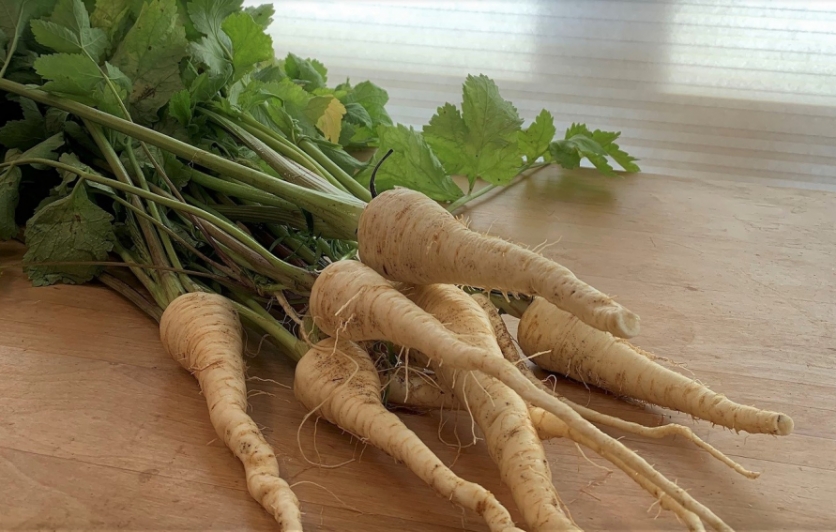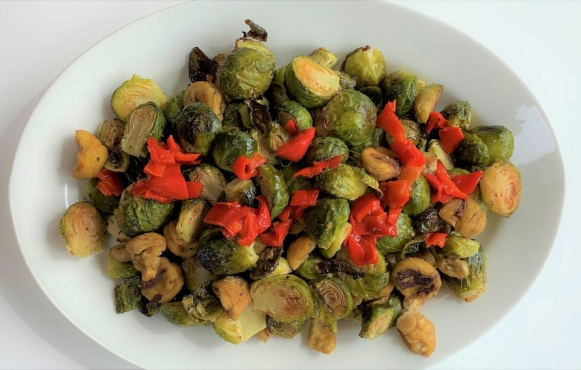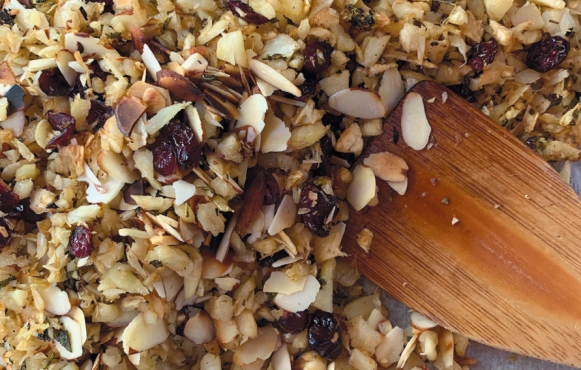Parsnips and Brussels Sprouts, Not So Humdrum, After All

Some vegetables have dreary reputations, such as parsnips or Brussels sprouts. In fact, a 2008 survey by Heinz dubbed Brussels sprouts the most-hated vegetable in America. Parsnips just seem to bring about yawns. However, they are both terrific seasonal choices for winter menus.
Why the Bum Rap for Brussels Sprouts?
As with their relative the cabbage, certain ways of cooking Brussels sprouts create a lingering smell that many people find offensive. Similar to cruciferous cousins such as collards and kale, the scent and the slightly bitter flavor are caused by the presence of glucosinolates. However, this is something you may not want to make a stink about—studies indicate that these natural compounds are good for your gut and can reduce cancer risk. If the cooking smell is bothersome, eat them raw!
In their bags at the grocery store, the pale little Brussels sprouts may look rather tame or even boring. But when you witness them growing in the garden, they are awe-inspiring. Sporting purple, dark green and light green leaves, they dominate the growing beds as they march up stalks that can reach as high as three feet. Leaving the buds (technically that’s what the cabbage-like sprouts are called) on the stalk until you are ready to eat them helps them stay fresher and tastier, so shop for them on a stalk instead of in a bag.
Raw Deal
Fresh and raw is the simplest way to make these underappreciated veggies shine. A half pound of shredded sprouts yields a simple salad for two. Drizzle them with equal amounts of olive oil and lemon juice or vinegar and sprinkle with salt and pepper. Toss in some shredded fennel or apple slices and your sprouts will really start to strut some star power.
Prepare raw parsnips by using a mandoline or vegetable peeler to slice off long, thin strips. Serve them on a bed of shredded romaine lettuce or even on top of shredded Brussels sprouts. Just drizzle on a little dressing and they are ready to eat.
Party with Parsnips
Parsnips may look plain, but they are temptingly versatile. The simplest side is made by boiling parsnips until tender then pureeing them with light seasonings and butter, but more complex options include spicy fries, rooty soups or vegetable tarts. This is definitively not a vegetable to be yawning about.
The tastiest parsnips are those that have been allowed to over-winter in the ground. While under the snow, starch converts to sugar and the roots become deliciously sweeter. When the ground thaws it is time to dig them up before they start growing again, and they will do so rather quickly! In their second season the roots get woody as they begin to produce flowers and seeds, so you want to harvest your treasures before this happens.
Whether transformed into salad, dinner or dessert, these two oft-overlooked veggies can become welcome guests at your holiday table.







